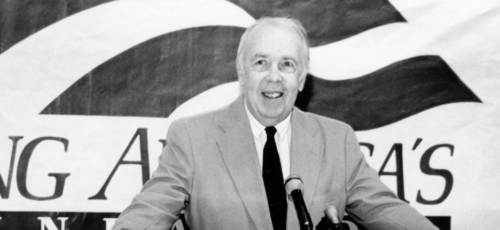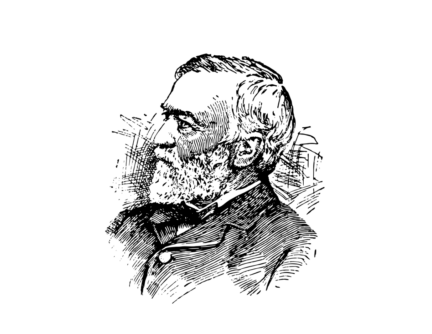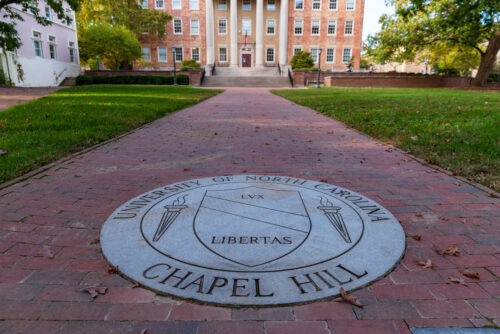Talk about trimming the excesses of the welfare state, and you’re often told by the harridans of the left, “That’s not what you really want! You want to roll back the New Deal! You love winter, because it gives you a chance to drive widows and orphans out into the snow!”
A hundred years ago, reformers worried about “the dead hand,” the idea that donors would inevitably create perpetual foundations with extremely restricted goals that would become outmoded over time. Their solution was for wealth creators to leave no instructions for how their money should be spent. The result is that the problem of donor intent was created, a problem that has only gotten worse in the past century.
But a different dead hand confronts us now—the cold and bony fingers of Franklin D. Roosevelt, thrust from his grave to clutch today’s reformers in an icy grip. In the Spring issue of Democracy, Mike Konczal of the Roosevelt Institute says that people who argue for an increased use of voluntarism and charity and a reduction in the welfare state’s scope and function are telling themselves “a story, a fairy tale really, about the past, about the way the world was and can be again under Republican policies.”
Who are these magicians who have hypnotized the right to accept the spell that the welfare state can wither away? Konczal names two: Marvin Olasky, author of The Tragedy of American Compassion, and David Beito, author of From Mutual Aid to the Welfare State.
Konczal never says why Olasky is inaccurate in his description of Victorian charity. His only argument is that Olasky’s book is “a treatise hailed by the likes of Newt Gingrich and William Bennett,” and Konczal is the sort of guy who thinks that if William Bennett endorses your book, you’re wrong, end of discussion.
Konczal is more nuanced in his treatment of Beito, who argues that fraternal orders were doing an increasingly good job of providing their members with health and welfare before the Great Depression. He argues that the benefits these fraternities provided were limited, usually not providing help to anyone over age 45.
Curiously, Konczal doesn’t say that many of these fraternal orders served communities the left likes: recent immigrants and African-Americans. And the coverage these orders provided was incomplete—but Beito’s point is that it was better than what these groups would have had had these orders not existed.
As to the issue of whether private charity could have served the millions of victims of the Great Depression, I showed in Return to Charity? that there was a great deal of evidence that there were a great many charitable leaders prior to 1930 who were eager for government to nationalize most charitable work.
Konczal ignores all of this. He has nothing to say about National Council of Social Work president Frederic Almy’s call in 1917 that “no people seem more sure that they have solved the problem of poverty than the socialists,” Cornelia J. Cannon’s seminal 1921 Atlantic article that said that social workers “are themselves becoming weary of their dependence on the uncertain generosity of the patrons of the poor.” Silas Bent’s declaration in 1927 that “it is the business of the city, county, and state to take care of most of the individuals whose plight calls for direct relief,” and Robert Kelso’s The Science of Public Welfare (1930), which concluded that when it came to helping the poor, the state should do nearly everything, leaving to private charity “experiments in the field of problems and methods not fully demonstrated as practical for social legislation and the functioning of government agencies.”
So while it is true that private charity was overwhelmed by the Great Depression, it is also true that many of the staff members and most of the leaders of these charities were eager to have their organizations taken over by the state. As Linda Gordon noted in her important history Pitied but Not Entitled, by 1935, a right-wing social worker was someone who supported the New Deal. The left favored far more radical methods of income redistribution.
Finally, Konczal has nothing to say about one of the more interesting counterfactuals of the New Deal, which I discuss in this 2002 article for Philanthropy: Rev. Edgar Helms’s 1935 offer to have Goodwill Industries place every American in a job in return for a one-time grant of $5 million from the federal government. This trial balloon was quickly shot down, but the evidence suggests that this was a serious offer on Goodwill’s part.
I’d like to conclude with a request to my friends on the left: will you please retire the argument that the right has a hidden agenda regarding welfare? I could argue that Mike Konczal and the Roosevelt Institute has a hidden agenda: to force the U.S. to accept Soviet-style communism, with all businesses nationalized except for those owned by the Koch family, which will be double-nationalized, in much the same way that Dean Wormer placed the bad boys of Animal House on double secret probation. I won’t make that argument because I know it isn’t true, but I hope Konczal shows my side the same courtesy I show theirs.
Political debate today is over whether the American economy will be between 30 and 50 percent controlled by government. You may not like this, but these are the limits in the times which we live. It’s time to put aside fantasies that one’s political opponents have hidden agendas and come up with constructive ways that charities, in our austere age, can take a larger role in fighting poverty.






